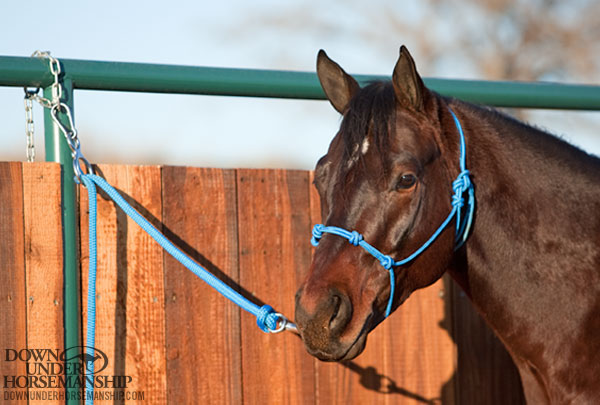Tie Your Horse Smart

It’s a great tool that makes tying as safe as possible and actually teaches a horse to stand calmly.
While the groundwork and training you do decrease the chance of your horse pulling back and fighting the pressure when tied, they don’t guarantee that he will never pull back. That’s why I recommend using the Aussie Tie Ring whenever you tie any horse – a yearling, a 2-year-old colt or even a well-trained adult horse. The Aussie Tie Ring does two things: 1) it allows the horse to move his feet, and 2) because he can move his feet, it keeps his panic to a minimum.
That’s the difference between the Aussie Tie Ring and bungee cords, inner tubes and whatever else people use to tie their horses up with. As soon as the horse stops pulling back, slack is created in the lead rope. The problem with bungee cords or inner tubes is when the horse stops pulling back, he doesn’t receive an instant relief of pressure. Instead, he has to go all the way back up to the fence before there’s any slack in the rope and the pressure behind his ears is taken away. With the tie ring, as soon as he stops pulling, all of the pressure is released. Every time he stops pulling back, he receives a small reward. With the tie ring, horses will actually teach themselves not to pull back. No matter the amount of training my horses have, I always use the Aussie Tie Ring when tying them up. To me, the tie ring is the cheapest insurance policy I’ll ever buy for my horses and the best tool when it comes to teaching them to tie safely and confidently.
